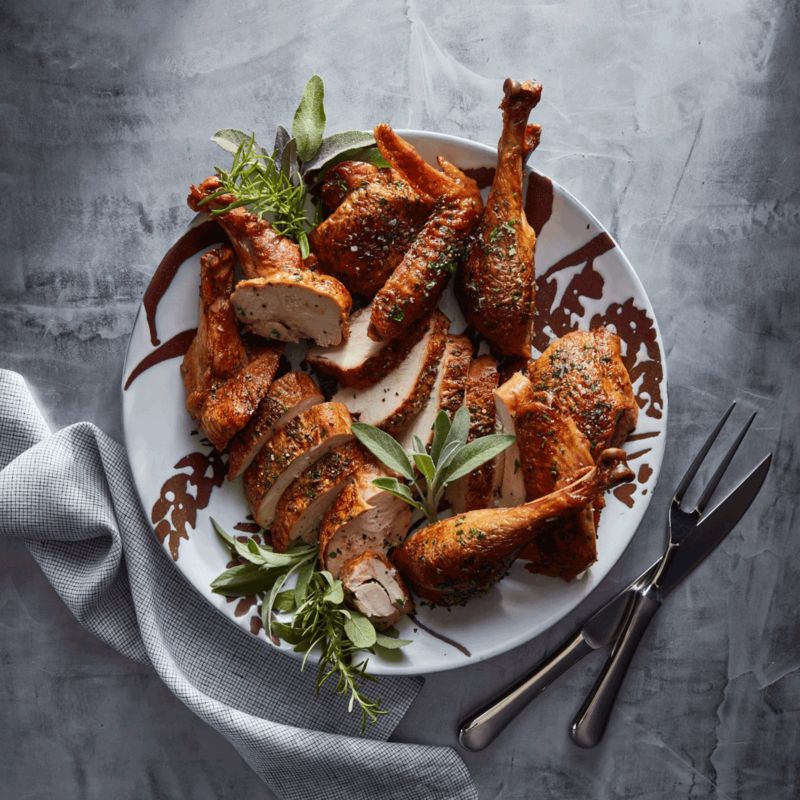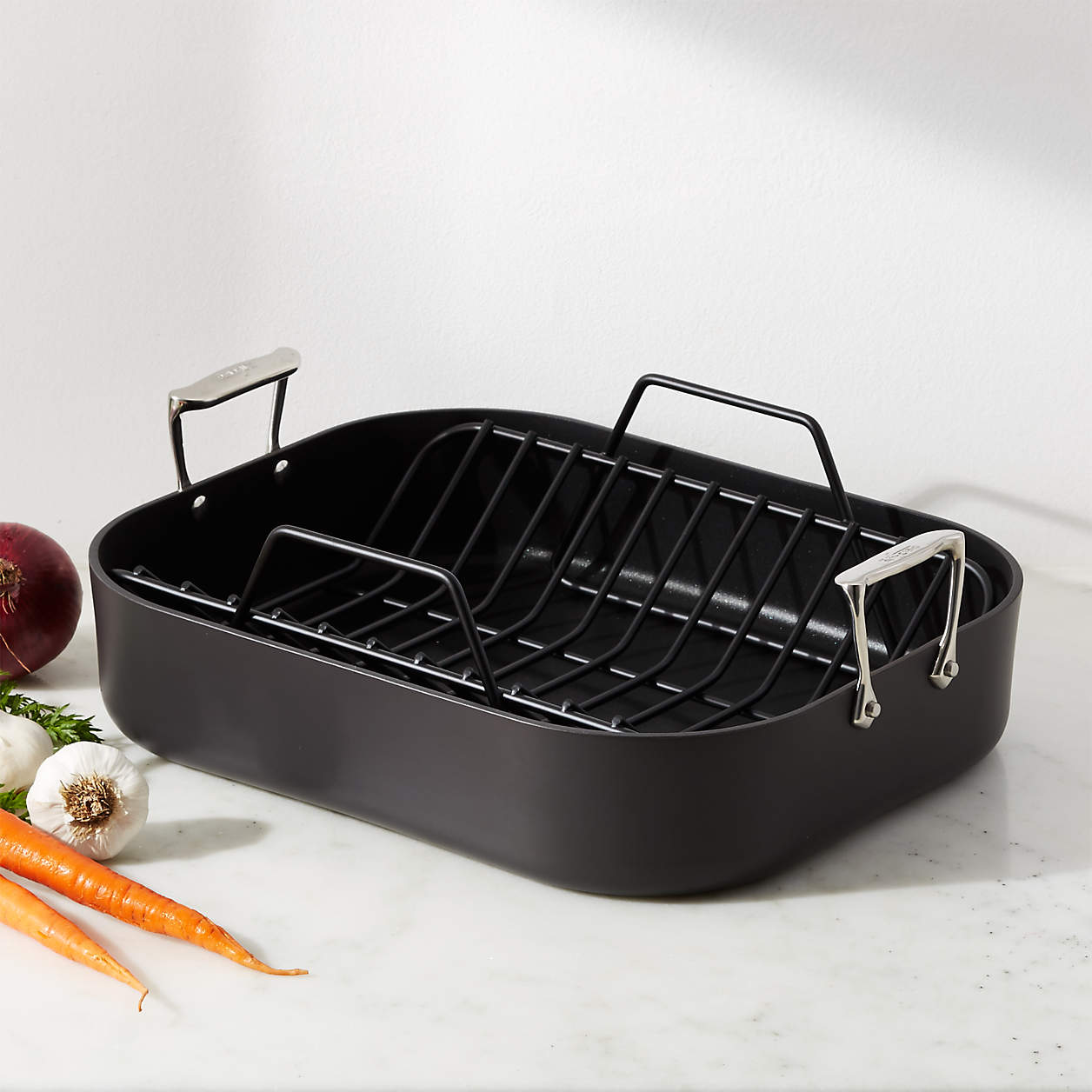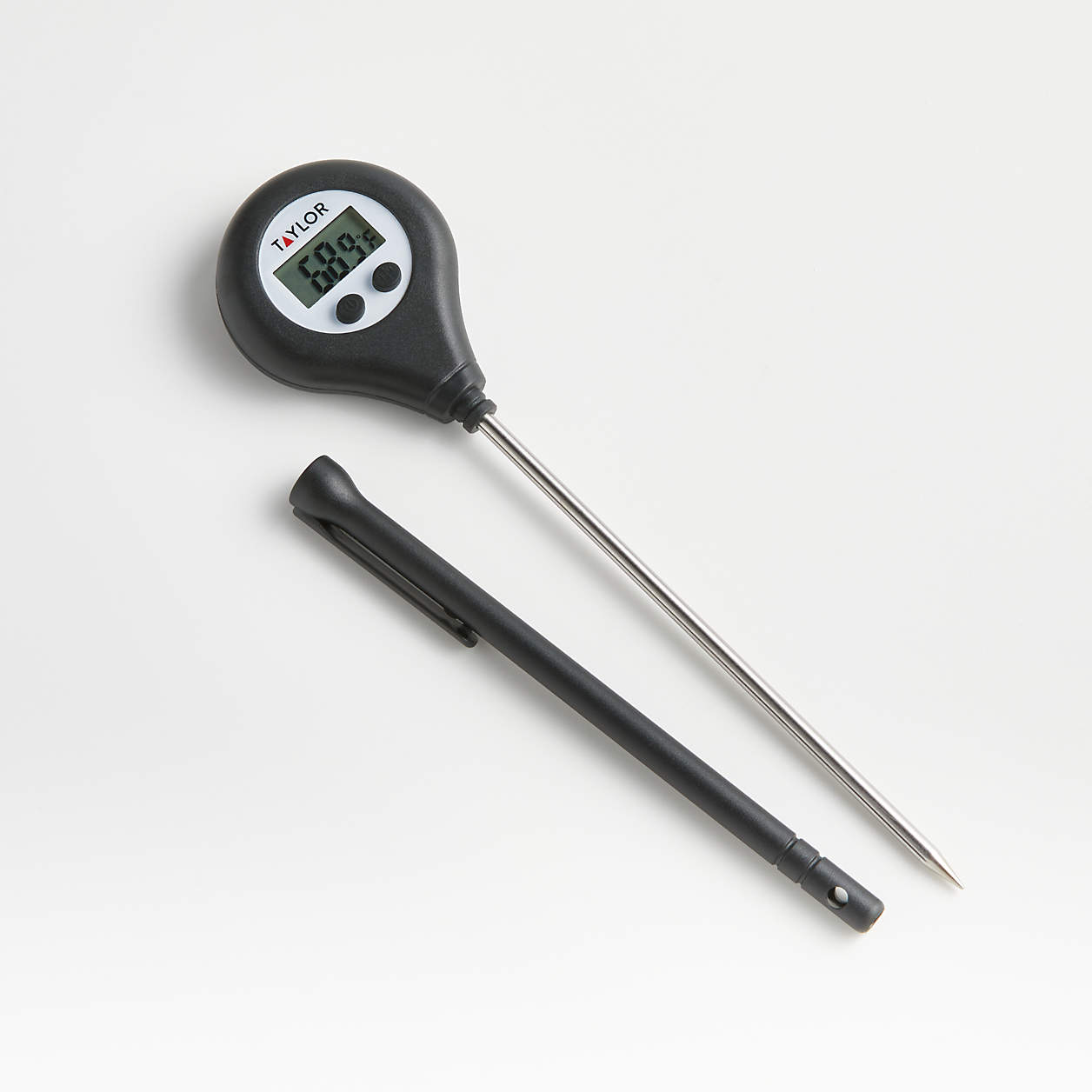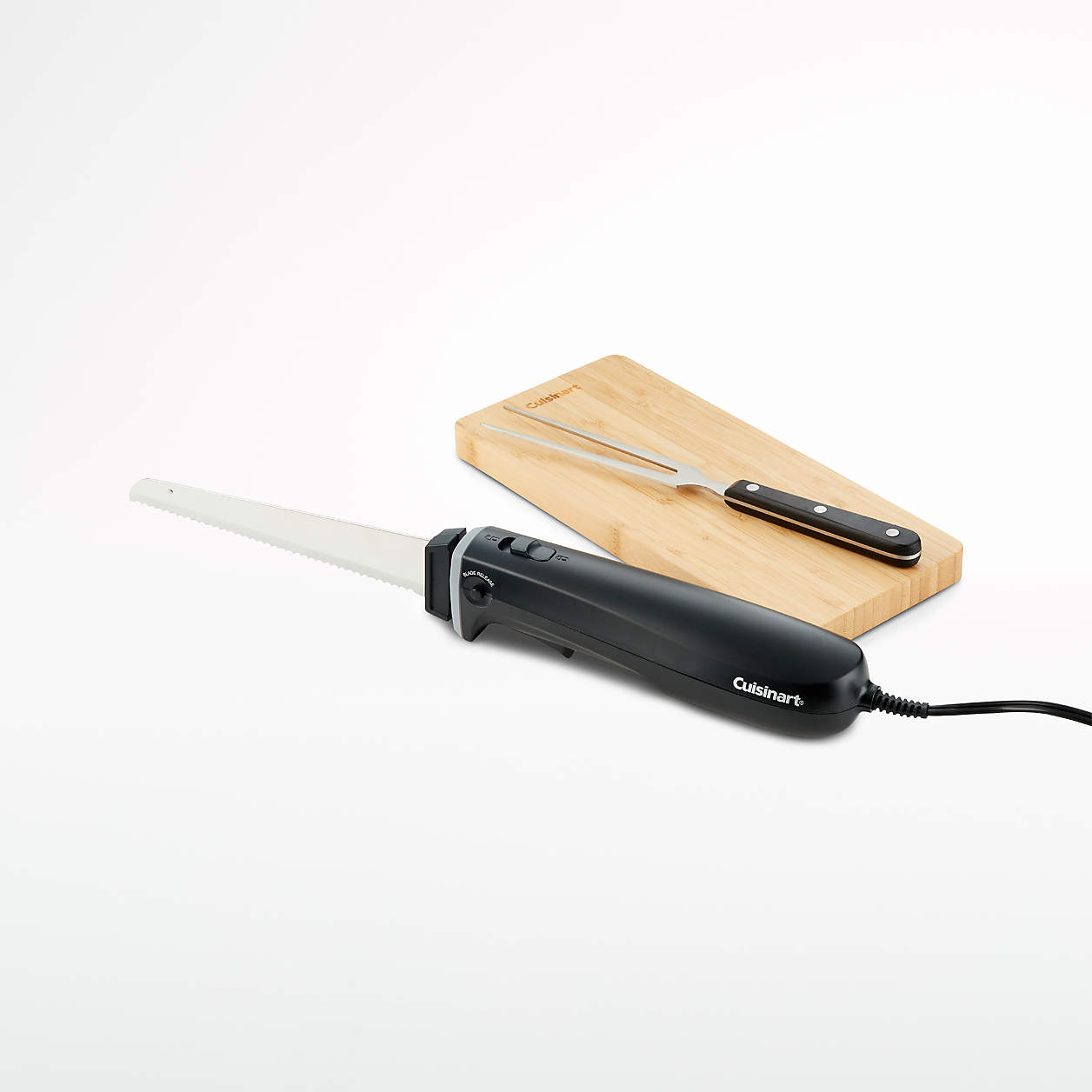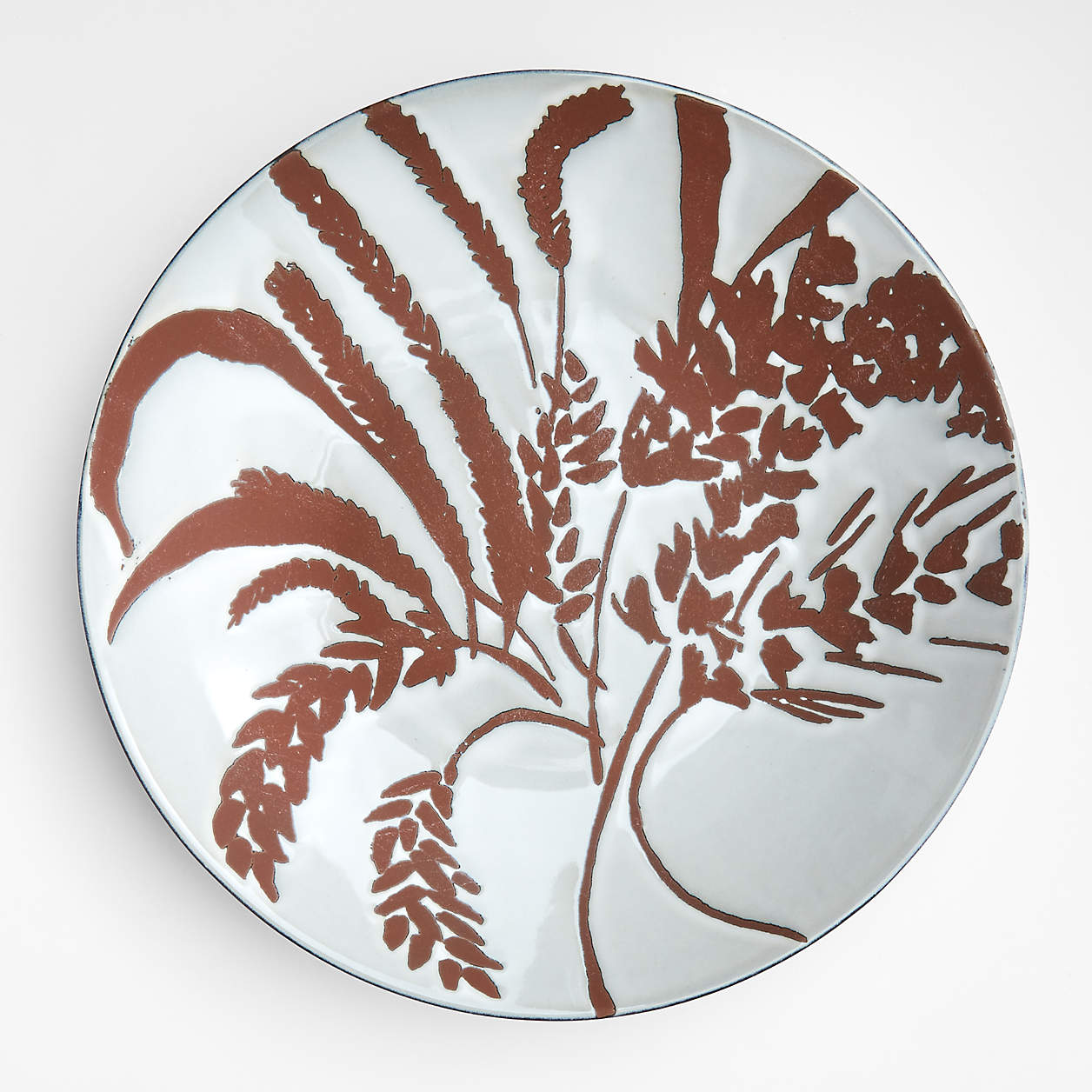Ingredients
- 1 fresh turkey, 16 to 18 pounds
- 8 tablespoons (1 stick) unsalted butter at room temperature
- 2 tablespoons extra virgin olive oil
- ⅓ cup fresh sage leaves, chopped, plus 4 or 5 sage leaves left whole
- ¼ cup parsley, chopped
- Kosher salt and freshly ground black pepper
- 1 yellow onion, peeled and quartered
- 1 lemon, halved
- 1 head garlic, top ⅓ inch cut off to expose bulbs
- 10 sprigs fresh thyme
Directions
- Preheat the oven to 450°F. Remove the giblets and wash the turkey inside and out. Using paper towels, dry the turkey well and transfer, breast side up, to a large roasting pan with a rack. Season the entire turkey, inside and out, with salt.
- In a small bowl, stir together the butter, olive oil, chopped sage, parsley, 1 teaspoon of salt and ¾ teaspoon pepper. Using your hands, slather the butter mixture all over the turkey. Gently lift up the skin from the breasts and tuck butter underneath. Carefully place the whole sage leaves under the skin (this will be a beautiful presentation).
- Stuff the cavity of the turkey with the onion, lemon, garlic and thyme sprigs. Loosely tie the legs together with kitchen twine and tuck the wing tips under the body of the turkey.
- Transfer the turkey to the oven and roast for 20 minutes. Turn the oven down to 350°F and continue to roast until juices run clear and an instant read thermometer reads 165°F, about 3½ hours. Transfer the turkey to a carving board, tent loosely with aluminum foil and allow to rest for 20 minutes. Carve the turkey and present on a platter. Serve at once.
Notes:
Count on about 1–1½ pounds of turkey per person. This accounts for the weight of the bones.
The safest place to dethaw a turkey is in your refrigerator, and this will take a couple of days so plan accordingly. Never leave a turkey on the counter to thaw.
Start with a high temperature to get a nice dark skin. But if at any time during cooking you feel like the turkey is getting too dark, cover the bird loosely with aluminum foil.
Generally speaking, cooking time is about 13 minutes per pound, but this varies greatly. Calculate the cooking time at 13 minutes per pound but start checking about 30 minutes before this time.
Stuffing the cavity with aromatics (lemons, garlic, onions and thyme) imparts wonderful flavor.
Tying the legs together and tucking the wing tips under the body of the turkey ensures even cooking time.
Place the turkey on the rack in the roasting pan so that you achieve a crispy skin all over.
on’t fuss with basting a turkey. If the turkey is properly seasoned with fat (oil and butter) and salt and pepper, you don’t need to baste. Basting only causes uneven cooking as the temperature of the oven falls every time you open the door to baste. It is entirely unnecessary!
Make sure you let the turkey rest. When you remove meat from the oven, the juices spill out. Letting it rest allows the juices to redistribute back into the bird, keeping it extra-moist.
Gravy tips:
Remove the excess fat using a fat separator. This will make it so much easier!
Deglaze the pan with white wine.
Loosen all those delicious brown bits in the pan, which is where all the flavor is.
Put flour and water in a Mason jar and shake vigorously to create a slurry. This is what you will use to thicken gravy. You don’t want to add flour directly into the pan because it will not dissolve, it will clump.
Whisk vigorously while cooking to avoid lumps.
Allow time to cook so gravy has a chance to thicken up.
Straining the gravy is entirely a personal preference.
Keep warm over low heat.

